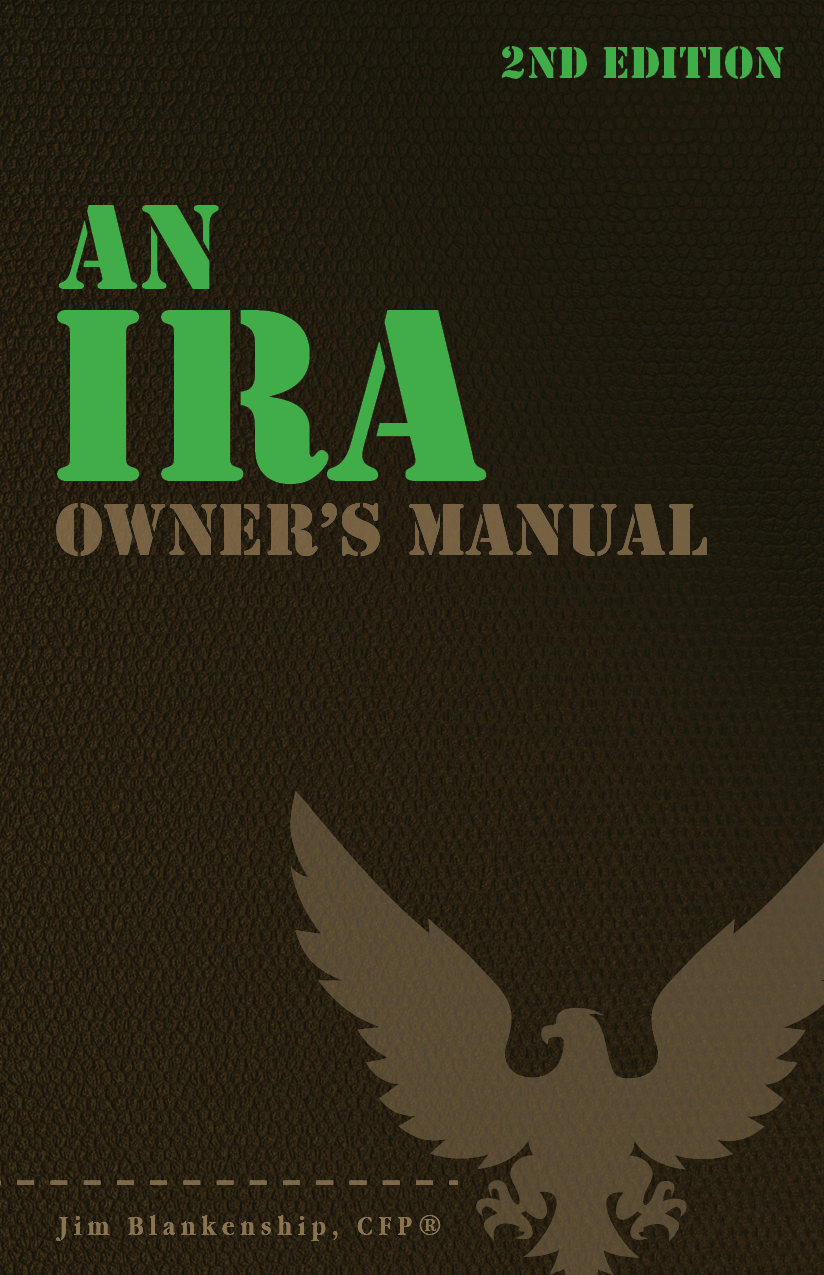As you may recall from this previous article, it is possible to use a rollover into an active 401(k) plan as an RMD avoidance scheme. Of course, this will only work as long as you’re employed by the employer sponsoring the 401(k) plan and you’re not a 5% or greater owner of the company. In addition, the rollover must be done in a timely fashion, prior to the year that you will reach age 70 1/2 in order to avoid RMD. An example of where timing worked against a taxpayer (at least temporarily) recently came to me via the ol’ mailbag:
IRA
Using First Year RMD Delay to Your Advantage
When you are first subject to RMD (Required Minimum Distributions), which for most folks* is the year that you reach age 70½, you are allowed until April 1 of the following year to receive that first minimum distribution. For all other years you must take your RMD by December 31 of that year. For many folks, it makes the most sense to take that first year RMD during the first tax year (by December 31 of the year that you’re age 70½), because otherwise you’ll have two RMDs hitting your tax return in that year. However, in some cases, it might work to your advantage to delay that first distribution until at least the beginning of the following year – as long as you make it by April 1, you’re golden. There may be many circumstances that could make this delay work to your advantage – maybe you’re still working […]
How to Deal With Missed Required Minimum Distributions
What happens when a beneficiary doesn’t act in a timely fashion with regard to taking Required Minimum Distributions from the inherited IRA? In other words, what are your options if you’ve missed Required Minimum Distributions (RMDs) in prior years? The Inheritance So, let’s say you inherited an IRA from your mother – this was her own IRA that she had contributed to or rolled over funds from a qualified plan at some point, and had designated you as the sole primary beneficiary. Things get really hectic and confusing after the death of a parent, and sometimes we don’t cover all of the bases properly… and in this example, you didn’t realize that you needed to begin taking Required Minimum Distributions (RMD) from your inherited IRA as of December 31 of the year following the year of your mother’s death. As of now, for example’s sake, let’s say we’re in the […]
Annuity in an IRA? Maybe, now
Forever and a day, the rule of thumb has been that you should not use IRA funds to purchase an annuity – primarily because traditional annuities had the primary feature of tax deferral. Since an IRA is already tax-deferred, it’s duplication of effort plus a not insignificant additional cost to include an annuity in an IRA. This hasn’t stopped enthusiastic sales approaches by annuity companies – plus new features may make it a more realistic approach. Changes in the annuity landscape have made some inroads against this rule of thumb – including guaranteed living benefit riders, death benefits, and other options. Recently the IRS made a change to its rules regarding IRAs and annuities that will likely make the use of annuities even more popular in IRAs: The use of the lesser of 25% or $125,000 of the IRA balance (also applies to 401(k) and other qualified retirement plans) for […]
Resurrecting the Qualified Charitable Distribution?
This past week the US House of Representatives passed a bill (HR 4719, known as the America Gives More Act) which would re-instate the Qualified Charitable Distribution from IRAs and make the provision permanent. This provision expired at the end of 2013, as it has multiple times in the past, only to be re-instated temporarily time and again. A Qualified Charitable Distribution (QCD) is when a person who is at least age 70½ years of age and subject to Required Minimum Distributions from an IRA is allowed to make a distribution from the IRA and direct the distribution to a qualified charitable organization without having to recognize the income for taxable purposes. This has been a popular option for many taxpayers, especially since the QCD can also be recognized as the Required Minimum Distribution for the year from the IRA.
QDRO vs Transfer Incident to a Divorce
Divorcing couples often face the need to split up some retirement account assets. This can be done from a retirement plan such as a 401(k) or 403(b), or from an IRA. Depending on which type of account you’re splitting, the rules are very similar but are referred to by different names. For a qualified retirement plan (401(k) or 403(b) plan), the operative term is Qualified Domestic Relations Order or QDRO (cue-DRO). For an IRA, the action is known as a transfer incident to a divorce. We discussed the QDRO in several other articles, so we’ll focus on the transfer incident to a divorce in this article.
Types of Rollovers Not Subject to the Once-Per-Year Rule
In a previous article we discussed the changes to the IRA One-Rollover-Per-Year rule. There are certain types of rollovers that are not included in that restriction, detailed below. As mentioned in the earlier article, trustee-to-trustee transfers are not considered “rollovers” by the IRS regarding this rule. So you are allowed to make as many trustee-to-trustee transfers in a year as you like – no restrictions on these kinds of transfers at all. This includes trustee-to-trustee transfers from or to IRAs, 401(k)s, 403(b)s, or any eligible plan. In addition, a rollover from an IRA into a 401(k) or other Qualified Retirement Plan (QRP) is not impacted by this rule. This means that you can roll funds out of your IRA and into your employer’s 401(k) plan with no restriction – regardless of whether or not you have already made an IRA-to-IRA rollover in the previous 12 months. Similarly, a rollover from […]
Be Careful When Converting
When converting from a 401(k), traditional IRA, 403(b), SIMPLE IRA, SEP or 457(b) to a Roth IRA there are some important tax considerations to keep in mind. First, converting from a tax deferred plan to a tax free plan it’s not always the best idea. Generally, it’s going to make sense to convert if the tax payer believes that he or she will be in a higher income tax bracket in retirement. For example, John, age 28 has a 401(k) and recently left his employer. He’s currently in the 15% bracket but expects to be in the 28% bracket or higher in retirement. It may make sense for John to convert his 401(k) to his Roth IRA. This makes sense for John because when he converts from a pre-tax, employer sponsored plan like the 401(k) it’s money that has not yet been taxed. If he converts while in the 15% […]
The Cost of Waiting
Procrastination is a silent and slow killer. Everyone, including yours truly, is guilty of putting things off, waiting until the last minute and then scurrying around frantically to get done what we could have easily gotten finished weeks or months ago if we would have either planned ahead or simply started. Let me give you an example. Last year my wife and I were debating whether or not to have a tree removed from our back yard. The culprit is the much loathed sweet gum tree that is common in this area of the country. Readers familiar with this pariah of the deciduous family of trees recognize it with annoying “gumballs” that are far from being smooth but rather are the sharp and pointy fruits that fall relentlessly from the tree mainly in the fall and work wonders on mower blades and bare feet. Needless to say they are a […]
Further Guidance on the One-Rollover-Per-Year Rule for IRAs
As a follow-up to the recent post on this blog The One-Rollover-Per-Year Rule: Revised, the IRS has recently released some additional guidance on the subject, via Announcement 2014-15. As previously mentioned, the IRS has determined to begin using the one-rollover-per-year rule applied to ALL IRAs that the taxpayer owns, rather than only the affected IRAs that have been involved in a rollover. According to the Announcement, the IRS fully acknowledges that the previous understanding of the rule was that it applied on an IRA-by-IRA basis. In fact, there was a Proposed Regulation § 1.408-4(b)(4)(ii) on the books that was to further define the rule as applied only to the involved IRAs. Ever since the Tax Court decided otherwise in the case Bobrow v. Commissioner (TC Memo 2014-21), the rule has been changed. According to the recent announcement though, this will not take affect across the board until January 1, 2015. […]
How Does an Early Withdrawal from a Retirement Plan Affect My Taxes?
Oftentimes we are faced with difficult situations in life – where we need extra money to pay for a major car repair, a new roof for the house, or just day-to-day living expenses – and our emergency funds are all tapped out. Now your options become poor: should I go to a payday loan place, put more on my credit card? My mortgage is upside-down so there’s no home equity loan in my future, and I can’t ask my folks for a loan, I’ve asked them for too much. Hey, what about my retirement plan? I’ve got some money socked away in an IRA that’s just sitting there, why don’t I take that money? It’s really tough to be in a situation like this, but you need to understand the impacts that you’ll face if you decide to go the route of the IRA withdrawal, especially if you’re under age […]
How Much Do I Need to Save: Part II
Last week I gave some general indications on how much someone needed to save. We used general percents and some basic numbers but this week I want to actually put those numbers to work. For example – let’s say we have a 30 year old couple that says they would like to have $3,000,000 saved at retirement (assume their both the same age and will both retire at 65). We’ll also assume that they have not started saving yet. Using a 5% compounded annual rate of return this couple would need to save about $2,640 per month for 35 years in order to hit their goal. If we assume they’ve amassed $50,000 by age 30, then they only need to save $2,388 per month. If we use the $2,388 as our savings made at 10% that means our annual income for the couple is about $286,560. Using the same amount […]
The One-Rollover-Per-Year Rule: Revised
In a surprising decision, US Tax Court has ruled that the One-Rollover-Per-Year rule applies to all IRAs, rather than to each IRA separately as was previously thought. IRS Publication 590, Individual Retirement Arrangements (IRAs), has the following information in regard to the one-rollover-per-year rule: Waiting period between rollovers. Generally, if you make a tax-free rollover of any part of a distribution from a traditional IRA, you cannot, within a 1-year period, make a tax-free rollover of any later distribution from that same IRA. You also cannot make a tax-free rollover of any amount distributed, within the same 1-year period, from the IRA into which you made the tax-free rollover. The 1-year period begins on the date you receive the IRA distribution, not on the date you roll it over into an IRA. The use of the term “that same IRA” has always been taken to mean that the rule applies […]
2014 IRA MAGI Limits – Married Filing Separately
Note: for the purposes of IRA MAGI qualification, a person filing as Married Filing Separately, who did not live with his or her spouse during the tax year, is considered Single and will use the information on that page to determine eligibility. For a Traditional IRA (Filing Status Married Filing Separately): If you are not covered by a retirement plan at your job and your spouse is not covered by a retirement plan, there is no MAGI limitation on your deductible contributions. If you are covered by a retirement plan at your job and your MAGI is less than $10,000, you are entitled to a partial deduction, reduced by 55% for every dollar (or 65% if over age 50), and rounded up to the nearest $10. If the amount works out to less than $200, you are allowed to contribute at least $200. If you are covered by a retirement […]
2014 MAGI Limits for IRAs – Married Filing Jointly or Qualifying Widow(er)
Note: for the purposes of IRA MAGI qualification, a person filing as Married Filing Separately, who did not live with his or her spouse during the tax year, is considered Single and will use the information on that page to determine eligibility. For a Traditional IRA (Filing Status Married Filing Jointly or Qualifying Widow(er)): If you are not covered by a retirement plan at your job and your spouse is not covered by a retirement plan, there is no MAGI limitation on your deductible contributions. If you are covered by a retirement plan at work, and your MAGI is $96,000 or less, there is also no limitation on your deductible contributions to a traditional IRA. If you are covered by a retirement plan at your job and your MAGI is more than $96,000 but less than $116,000, you are entitled to a partial deduction, reduced by 27.5% for every dollar […]
2014 MAGI Limits – Single or Head of Household
Note: for the purposes of IRA MAGI qualification, a person filing as Married Filing Separately who did not live with his or her spouse during the tax year, is considered Single and will use the information on this page to determine eligibility. For a Traditional IRA (Filing Status Single or Head of Household): If you are not covered by a retirement plan at your job, there is no MAGI limitation on your deductible contributions. If you are covered by a retirement plan at work, if your MAGI is $60,000 or less, there is also no limitation on your deductible contributions to a traditional IRA. If you are covered by a retirement plan at your job and your MAGI is more than $60,000 but less than $70,000, you are entitled to a partial deduction, reduced by 55% for every dollar over the lower limit (or 65% if over age 50), and […]
New Year’s Resolutions You Can Keep
This time of year it’s cliché to make resolutions for the coming year. Whether it’s to lose weight, stop a bad habit, or begin saving for retirement, many of us set these goals at the beginning of the new year. And then three weeks into the new year, we’ve left that goal astern – having changed nothing at all. The problem is in how we set goals for ourselves. For example, we might make the bold statement that we want to lose weight. Often, that’s all there is to our resolution – but there’s much more to setting a goal than making a statement about it. There has to be a plan, and some specifics around the goal. If the resolution is to lose weight, first of all you need to put some specifics around that goal: I want to lose fifteen pounds in 2014. Now, how are you going […]
Annuities – Fees, Expenses, and Taxes
Last week we covered some of the differences in annuities and the various types of annuities someone can purchase. In our final annuity installment (no pun intended) I want to explain some of the fees and expenses that some annuities and annuity providers employ. As mentioned in my first annuity article annuities are an insurance product – insuring against living too long. Most companies that offer annuities will charge for this insurance by means of what are called mortality and expense charges. M&E charges can be as low as .25% to as high as over 2%. These charges are the expenses the annuity company charges to the entire risk pool of policyholders in order to pay for the few that will outlive their life expectancy. Most policyholders and annuitant will not outlive their life expectancy and thus pay for those that do. M&E charges will also help the annuity company […]
IRA Options Between Ages 60 and 70
There are lots of articles around that speak to what you can and cannot do with your IRA before you reach age 59½, and more that address what you must or must not do with your IRA after you’ve reached age 70½. But what can you do in the interim period? Surprisingly, you have all the control you may wish for. After you’ve reached age 59½, you are free to take withdrawals from your traditional IRA with no penalties. You will have to pay tax on any withdrawal from the IRA, but otherwise there’s no downside to taking money out of the account. For a Roth IRA, of course there’s no tax on the withdrawal. You’re free to take as much as you like (or as little) at any time. Of course, these withdrawals from either type of account, Roth or traditional, will forever remove the funds from the tax-protected […]
Bloggers Are Encouraging Adding 1% More to Your Savings Rate
In November we financially-oriented bloggers have banded together to encourage folks to increase their retirement savings rate by at least 1% more than the current rate. It’s a small step, but it will pay off for you in the long run. Given the poor level of savings rate (less than 5%) these days, even this small step will be a big boost for many people’s savings. Below is the list of my fellow bloggers who have written articles showing ways that you can start to increase your savings rate, as well as showing what the benefits can be. Thanks to everyone who has participated so far – and watch for more articles in the weeks to come! The Journey of $1 Million Dollars Begins with 1% by Richard Feight, @RFeight Give Yourself A Raise by Ben Rugg, @BRRCPA The 1 Percent Solution by John Davis, @MentorCapitalMg Friday Financial Tidbit-What increasing your […]


 Sterling Raskie, MSFS, CFP®, ChFC®
Sterling Raskie, MSFS, CFP®, ChFC® The latest in our Owner’s Manual series, A 401(k) Owner’s Manual, was published in January 2020 and is available on
The latest in our Owner’s Manual series, A 401(k) Owner’s Manual, was published in January 2020 and is available on  A Medicare Owner’s Manual, is updated with 2020 facts and figures. This manual is available on
A Medicare Owner’s Manual, is updated with 2020 facts and figures. This manual is available on  Social Security for the Suddenly Single can be found on Amazon at
Social Security for the Suddenly Single can be found on Amazon at  Sterling’s first book, Lose Weight Save Money, can be
Sterling’s first book, Lose Weight Save Money, can be  An IRA Owner’s Manual, 2nd Edition is available for purchase on Amazon. Click the link to choose the
An IRA Owner’s Manual, 2nd Edition is available for purchase on Amazon. Click the link to choose the  Jim’s book – A Social Security Owner’s Manual, is now available on Amazon. Click this link for the
Jim’s book – A Social Security Owner’s Manual, is now available on Amazon. Click this link for the  And if you’ve come here to learn about queuing waterfowl, I apologize for the confusion. You may want to discuss your question with Lester, my loyal watchduck and self-proclaimed “advisor’s advisor”.
And if you’ve come here to learn about queuing waterfowl, I apologize for the confusion. You may want to discuss your question with Lester, my loyal watchduck and self-proclaimed “advisor’s advisor”.